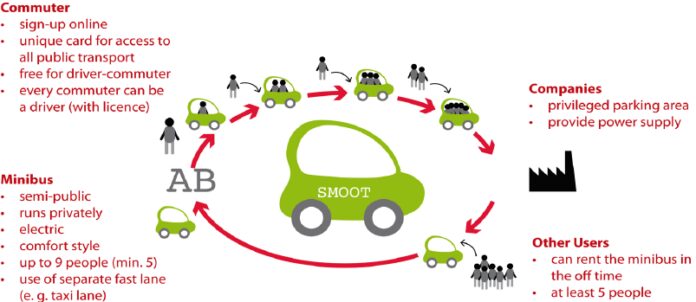“Sustainability” and “eco-friendly” have been buzzwords for some time, as the environmental impacts of human behaviors have become well known. As younger generations actively seek ways to put those buzzwords into action, businesses are responding. More organizations are adopting sustainability as a key component of how they operate and implement strategic decisions.
Manufacturing plant-based foods, switching to biodegradable packaging, and using renewable energy are ways companies are becoming more sustainable. Still, not every organization’s core product, founding mission, or trajectory brings “environmentally conscious” to mind. But that doesn’t mean you can’t find smaller yet noticeable ways to increase your efforts and appeal to consumers. Below are a few suggestions on how to focus on sustainability in 2024.
1. Use Eco-Friendly Suppliers

Your company’s supply chain can have a direct impact on how sustainable you are. From the products you sell to the business practices your vendors use, every little detail counts. Partnering with organizations that use green practices, such as recycling and electric vehicles, will help support your business’s efforts. Using eco-friendly suppliers and vendors can also ensure the products and services you’re delivering are sustainable.
For instance, if you’re a clothing retailer, consider buying from a wholesale apparel marketplace like Faire that features sustainable products. You and your buyers won’t need to spend a lot of time researching which brands are environmentally friendly. Instead, you can use search filters to identify sustainable brands to stock in your store(s). Such platforms provide a simpler and more streamlined method of sourcing eco-friendly brands and clothing.
Introducing sustainability into your supply chain can also extend beyond the products you sell. Think about the services you farm out to vendors, such as web hosting or waste management. Search for web hosting services like SiteGround that embrace sustainable practices and minimize their carbon footprints.
For vendors you’re already using, investigate whether the companies employ environmentally friendly business practices. Consider switching if they don’t.
2. Make Energy-Efficient Modifications

Most businesses lease or own several facilities, and those buildings are often responsible for a large amount of a company’s energy use. Lights, heating and cooling, and manufacturing processes all contribute to carbon emissions. There’s also the fact that buildings take up space and land that could contain trees and other vegetation.
Some companies are increasing their energy efficiency by ending their leases and allowing more employees to go remote. Business leaders are starting to see the value in letting staff stay connected via technology and perform work from home. They can cut expenses related to the upkeep of buildings, mortgages, leases, and utilities, and employees avoid carbon-producing commutes.
But while employees can perform a lot of responsibilities and jobs remotely, this strategy isn’t practical for every business. For companies that need to maintain their facilities, implementing energy-efficient changes like switching to LED light bulbs can make a difference. Energy-efficient equipment such as high-efficiency HVAC systems may cost more upfront. But the reduction in energy use over time usually produces enough savings to pay for those upfront costs.
You might also consider pursuing Energy Star certification for your buildings. This certification designates that your building meets stricter EPA energy performance standards. On average, Energy Star–certified facilities produce 35% fewer greenhouse gas emissions.
3. Implement Public Transportation or Carpooling Programs

Involving your employees in your company’s sustainability efforts is another way to promote green practices. Many organizations participate in activities like Bike to Work days to get more employees to reduce vehicle emissions. Events like these are also used to promote wellness and team building.
Beyond the standard “give up your car for a day” activities, there are more permanent ways to gain employee participation. Some businesses partner with local public transport organizations to offer complimentary bus passes. Employees can ride the bus for free with their company ID instead of driving individual cars to work. You can let free bus fare be its own incentive or provide bonuses to employees who commute via public transportation.
In areas where public transportation isn’t a viable solution for all employees, your company can implement a carpooling system. Staff members could volunteer to participate and coordinate schedules through HR or an internal committee, with bonuses going to employees who take part. Another way to incentivize sustainable commutes is to grant extra PTO to employees who carpool or use public transportation.
4. Emphasize Recycling

Surprisingly, not all offices have an easy way for employees to recycle waste. Consequently, paper plates, plastic bottles, and aluminum cans from lunches end up in the trash. Wasted paper from bad print jobs and discarded notes also end up in a landfill. Talk to your waste management company about getting recycling bins for your offices and buildings. See how you can replace or minimize trash bins and containers.
Buildings and facilities committed to environmentally conscious practices prioritize recycling over trash. You’ll see various recycling and compost bins labeled for different types of waste. This includes leftover food items, such as banana peels and apple cores, that would otherwise end up in a landfill. Let employees know the company is stepping up its sustainability efforts and encourage them to do their part.
Educate your staff on what materials they can recycle and which bins those materials should go in. You can also set companywide recycling goals for the year, rewarding employees for their participation. The reward can be monetary or even a relaxing field trip that involves getting away from work. Some organizations have rewarded sustainability efforts with on-site activities like “Fun Fridays,” where employees can watch movies, play games, or socialize.
Small Changes Can Add Up

Increasing your company’s sustainability efforts doesn’t always mean you have to completely revolutionize what your business does. Making smaller, incremental changes to everyday practices and operations can accomplish a lot in the long run. Using suppliers and vendors with eco-friendly products, services, and practices allows you to offer the same to your customers.
Additional changes, such as energy-efficient modifications and employee rewards for green practices, will help your company become more environmentally friendly. As 2024 wraps up, more businesses are prioritizing next year’s sustainability goals to remain relevant and profitable. Make yours one of them.









